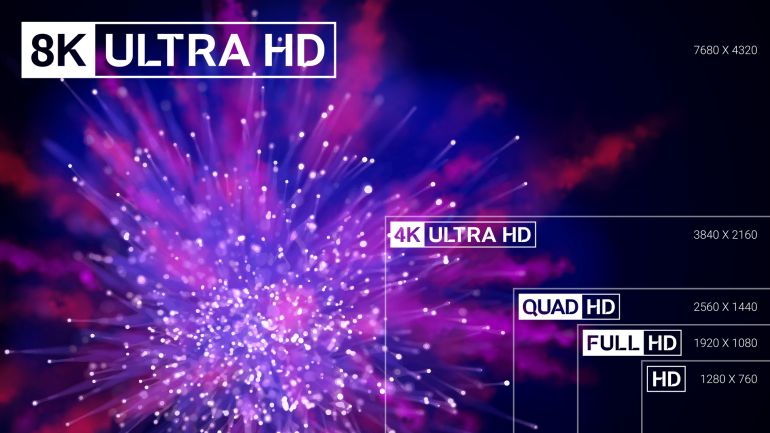
TV Screen Resolution Guide
When watching TV, a high-resolution screen can make your viewing experience even better. This article will help you understand TV resolution and how it affects what you see.
What is TV screen resolution?
TV screen resolution is the number of pixels on a TV screen. The higher the number, the better the picture quality in terms of clearness and sharpness.
TV resolution is generally measured using pixels for width and height.
For example, a TV with a 1080p screen resolution means there are 1080 vertical pixels and 1920 horizontal pixels.
Types of modern TV screen resolutions (1080i, 1080p, 4K, 8K)
There are two variations of the 1080 screens – interlaced (1080i) and progressively scanned (1080p).
1080i: In an interlaced display you’ll see 60 half-frames per second with 540 vertical lines per frame (half the amount of 1080p).
1080p: In a progressively scanned display you’ll see 60 full frames per second with 1080 vertical lines per frame.
4K: This refers to the amount of horizontal pixels (almost 4000) and these screens can show twice the amount of detail as a regular 1080p TV.
8K: This refers to the amount of horizontal pixels (almost 8000) and these screens can show four times the amount of detail as a regular 1080p TV.

Create an at-home cinema experience! See our TV wall mounting prices and information.
Choosing the right one
Currently 4K is the most popular resolution and more shows and videos are being filmed in 4K all the time. It makes sense to buy a TV with 4K resolution to take full advantage of this.
TVs with 8K resolution are also available at a higher price but there isn’t as much 8K content yet and a 4K TV will display it beautifully anyway. Moving forward, 8K content will become more common.
Pro TV Perth & Joondalup
If you’ve bought a new TV and want to get it wall mounted perfectly, please see more information and prices. Wall mounting TVs safely and tidily isn’t that easy. if you’re interested in how it’s done, check out how I wall mount a TV.
You may also be interested in:
OLED vs QLED TVs
OLED vs ULED TVs
Top 5 Causes of Poor TV Reception
What TV Antenna Do I Need
